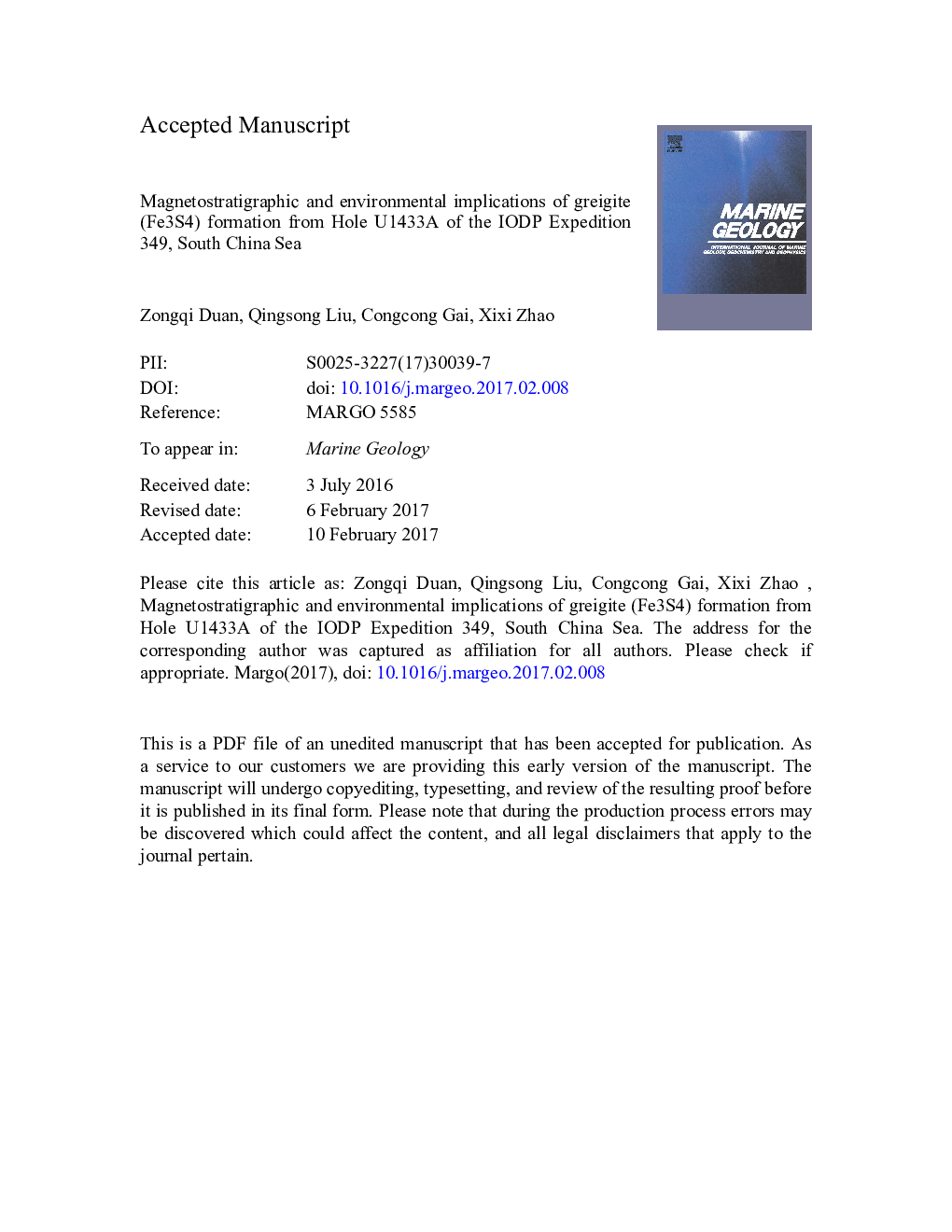| Article ID | Journal | Published Year | Pages | File Type |
|---|---|---|---|---|
| 8912072 | Marine Geology | 2017 | 35 Pages |
Abstract
A detailed magnetic analysis has been done on sedimentary core of the International Ocean Discovery Program (IODP) Site U1433A during Leg 349 in the South China Sea (SCS). Results show that dominant carriers of the natural remanent magnetization are greigite and (titano) magnetite. The major shift in both declination and inclination at ~Â 185Â mbsf is assigned to the Matuyama-Brunhes reversal boundary (~Â 0.773Â Ma). Constrained by biostratigraphic ages, variations in magnetic parameters of the core can be well correlated to the marine oxygen isotope record at glacial/interglacial cycles. Low values of concentration-dependent magnetic parameters correspond to the interglacials, and vice versa. During the interglacial periods, the dominant magnetic minerals are detrital (titano) magnetite and have relatively coarser grain sizes, while fine-grained greigites dominate the glacial periods. This indicates that during the glacials, greigite prevails at the anoxic condition with amount of terrigenous iron oxide caused by the disconnection between the SCS and the Indian Ocean and the exposure of shelf, but digenesis is suppressed at the opposite environment by the high sea level (interglacials). Thus, the preservation/sulfide process of (titano) magnetite is intimately related to the transformation of sea level changes with the monsoon-related rainfall caused by the glacial/interglacial variation.
Related Topics
Physical Sciences and Engineering
Earth and Planetary Sciences
Geochemistry and Petrology
Authors
Zongqi Duan, Qingsong Liu, Congcong Gai, Xixi Zhao,
